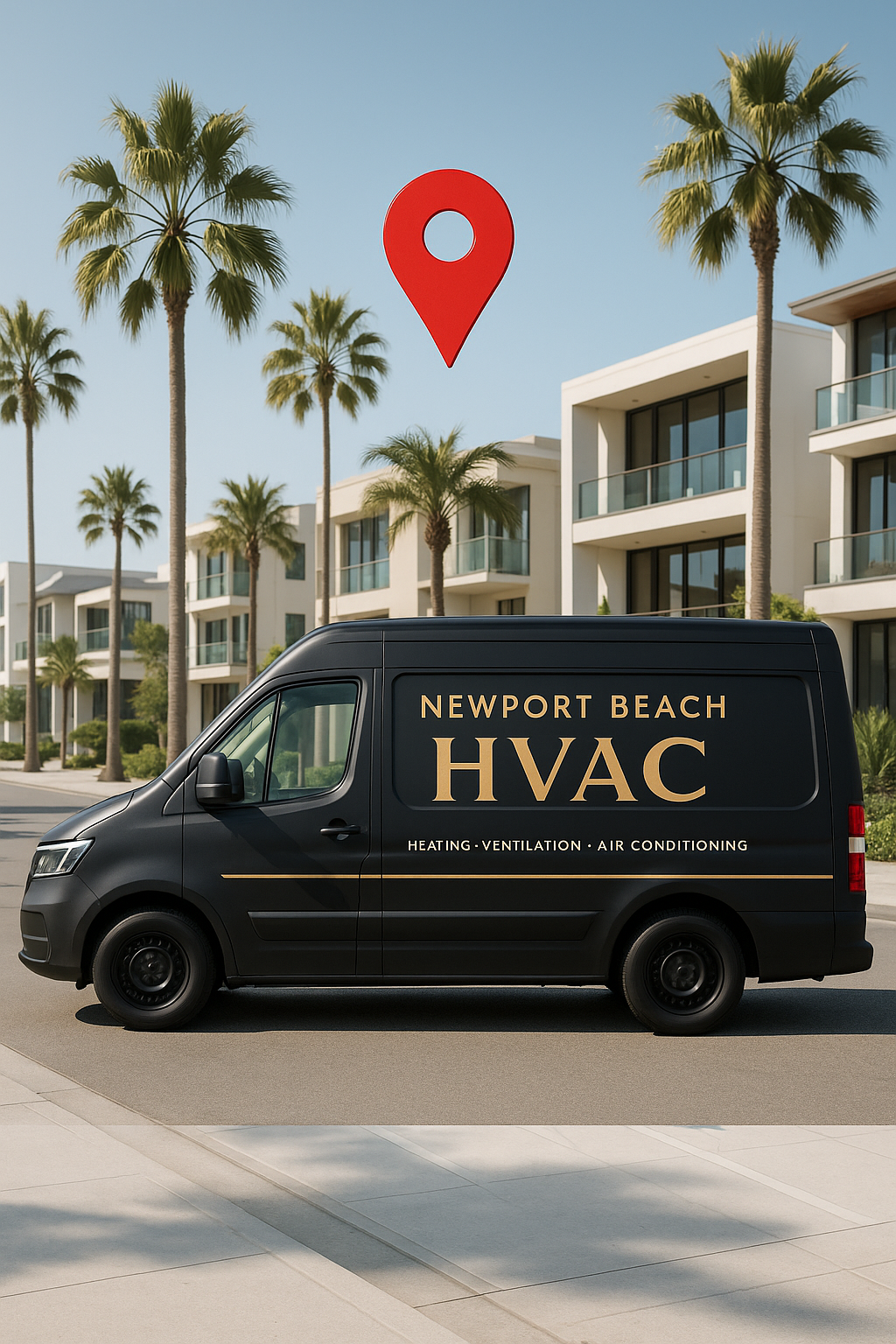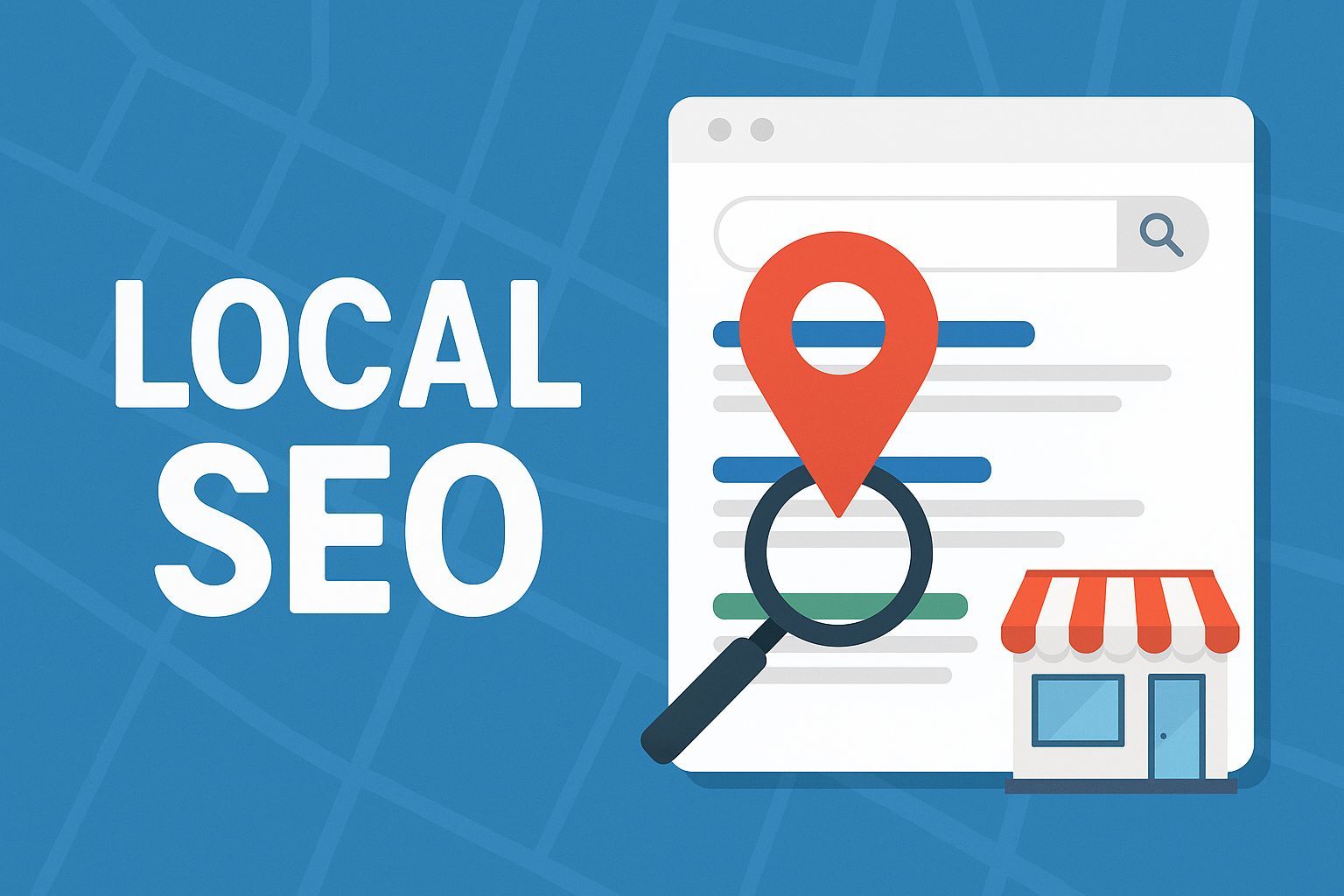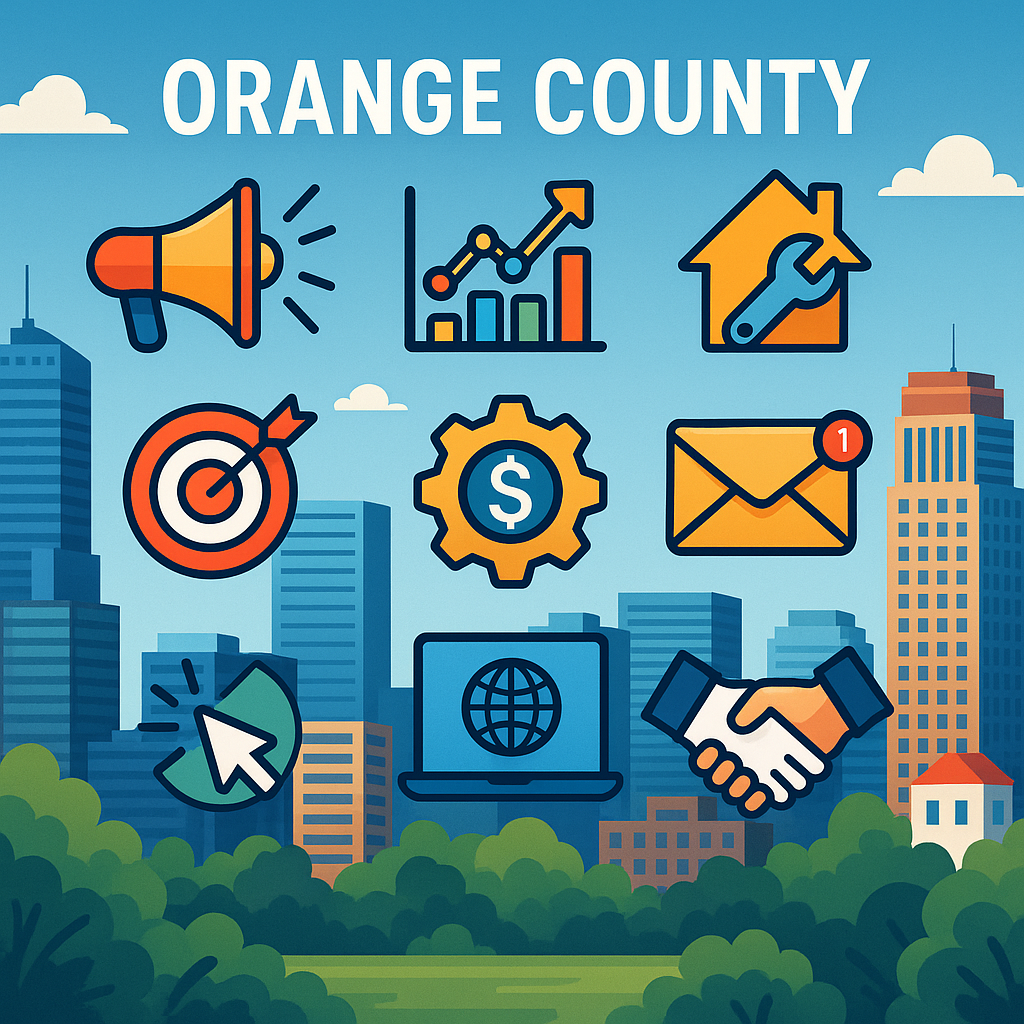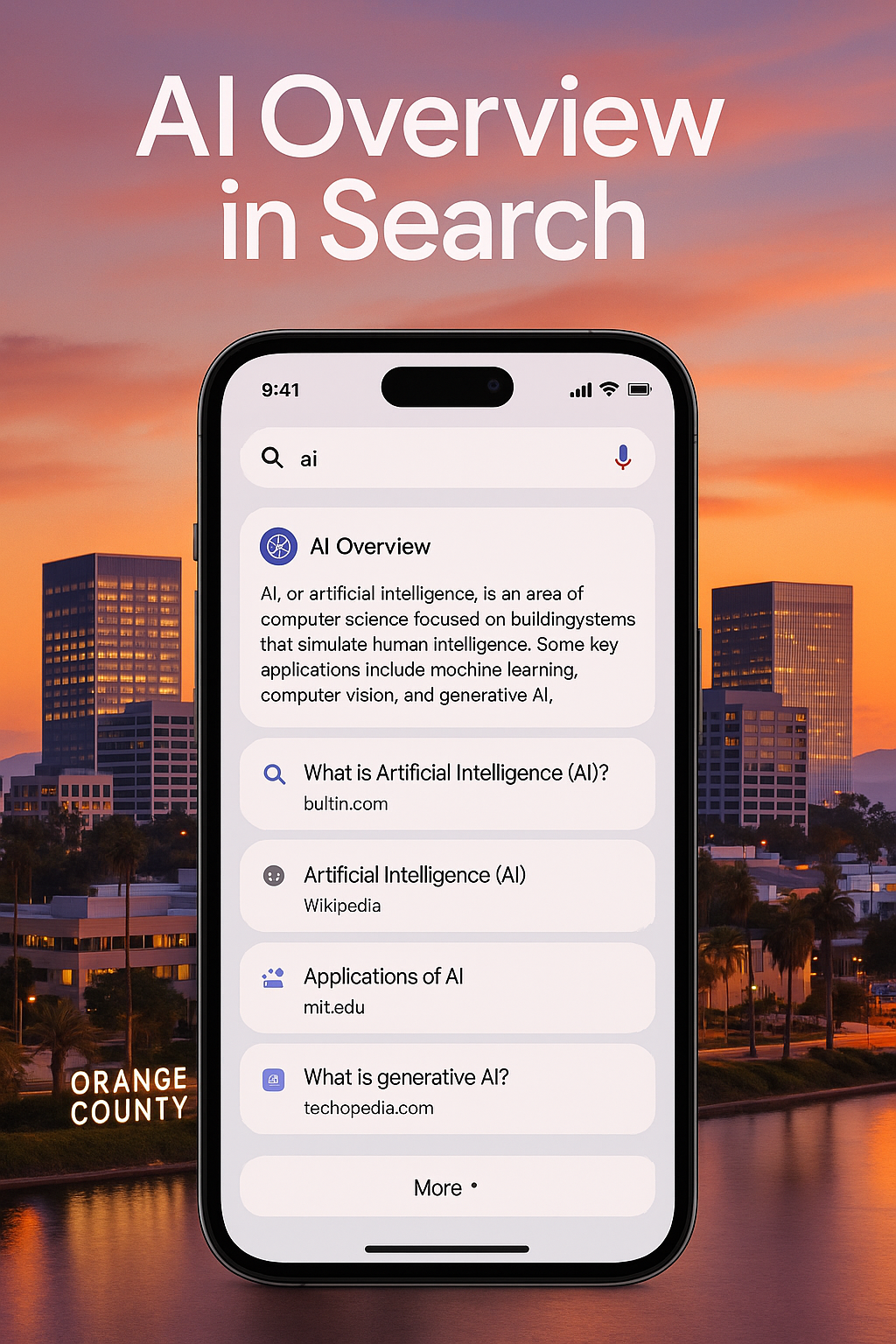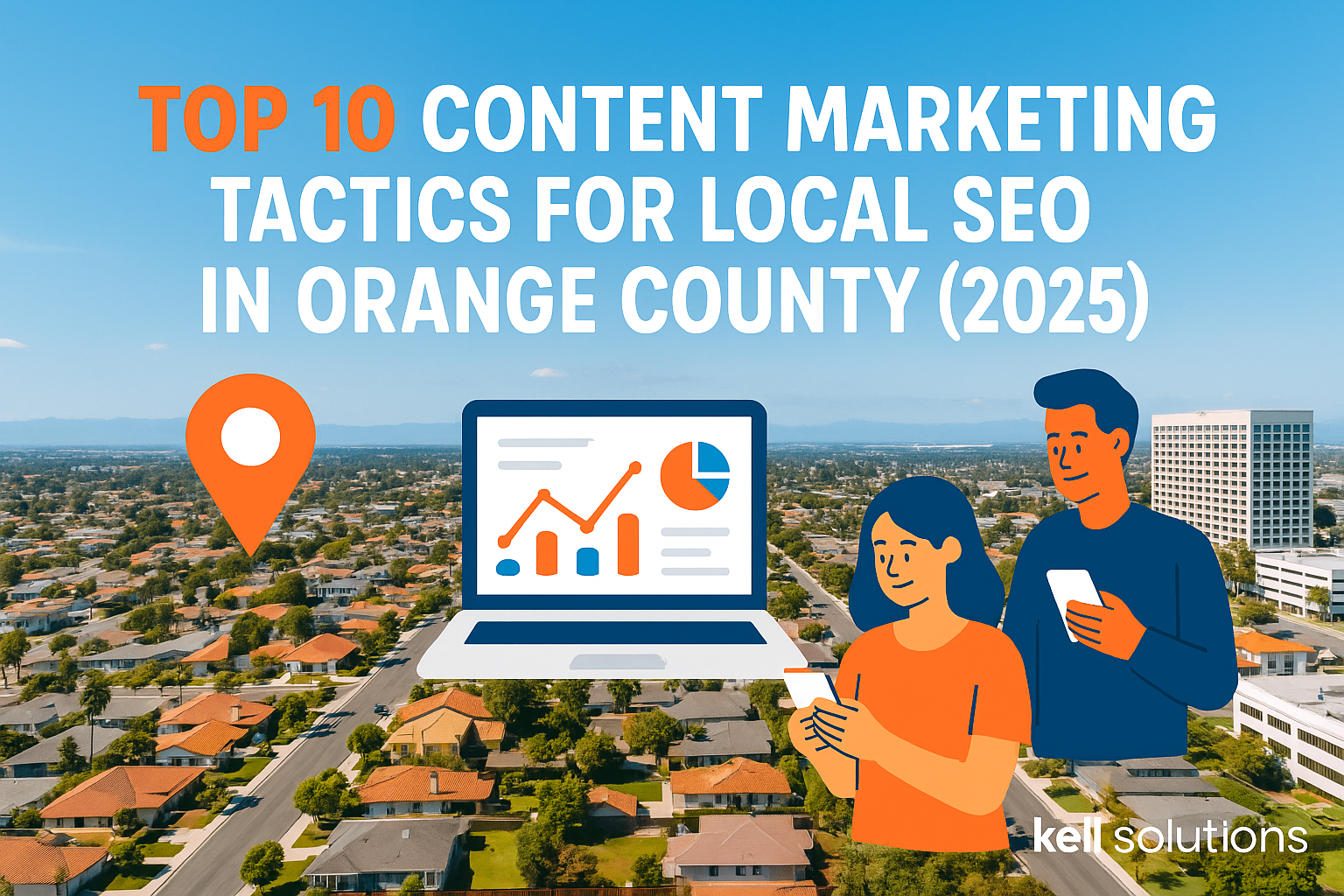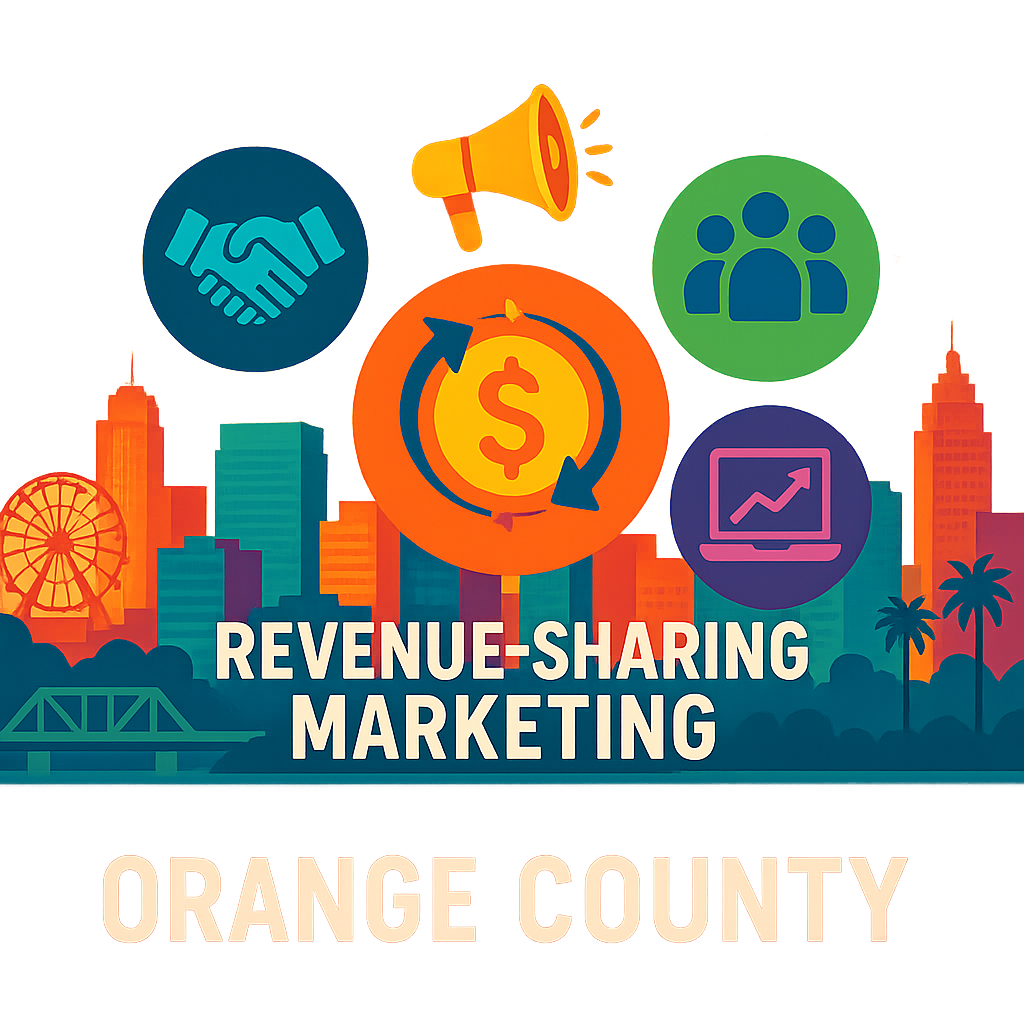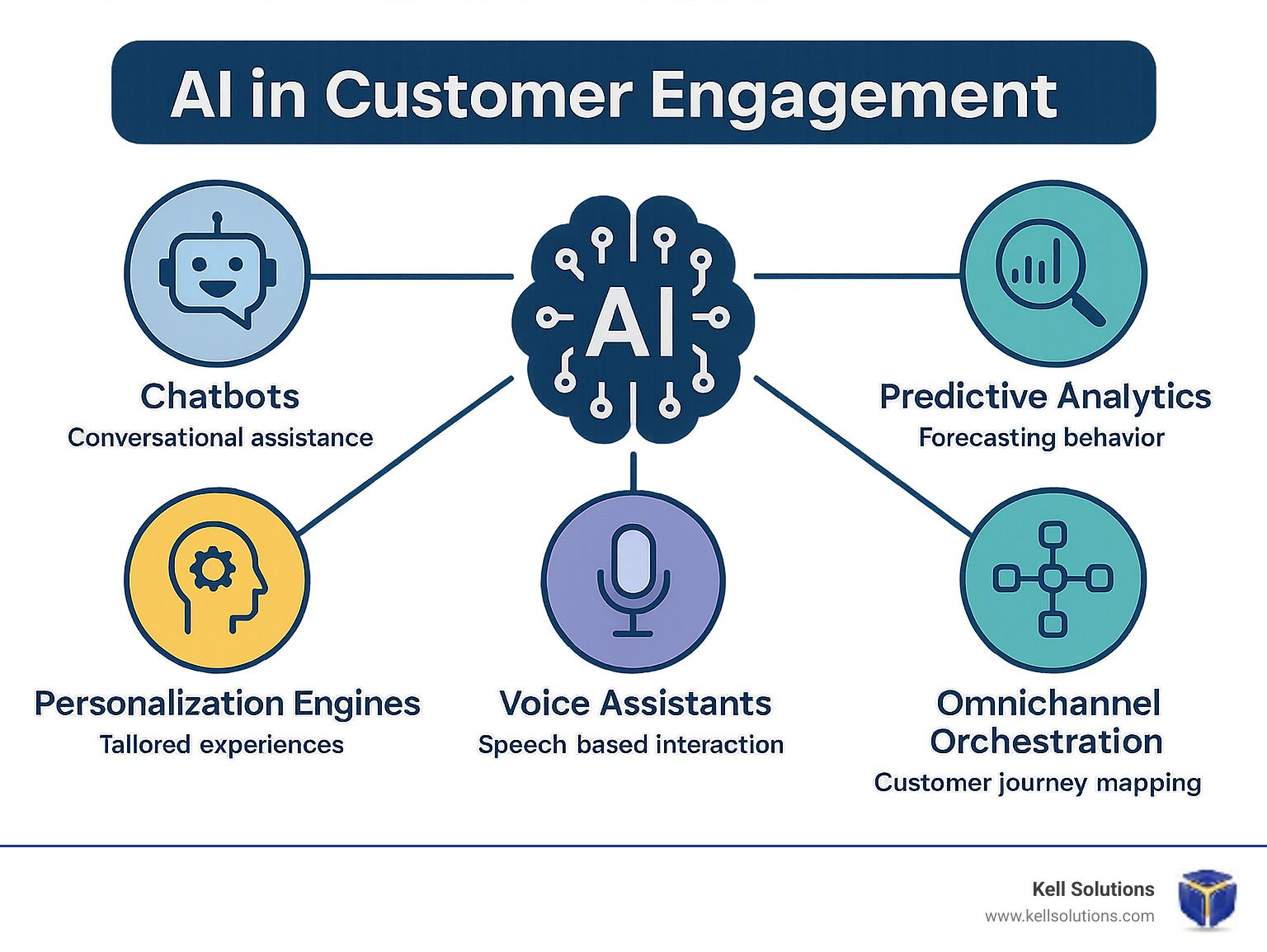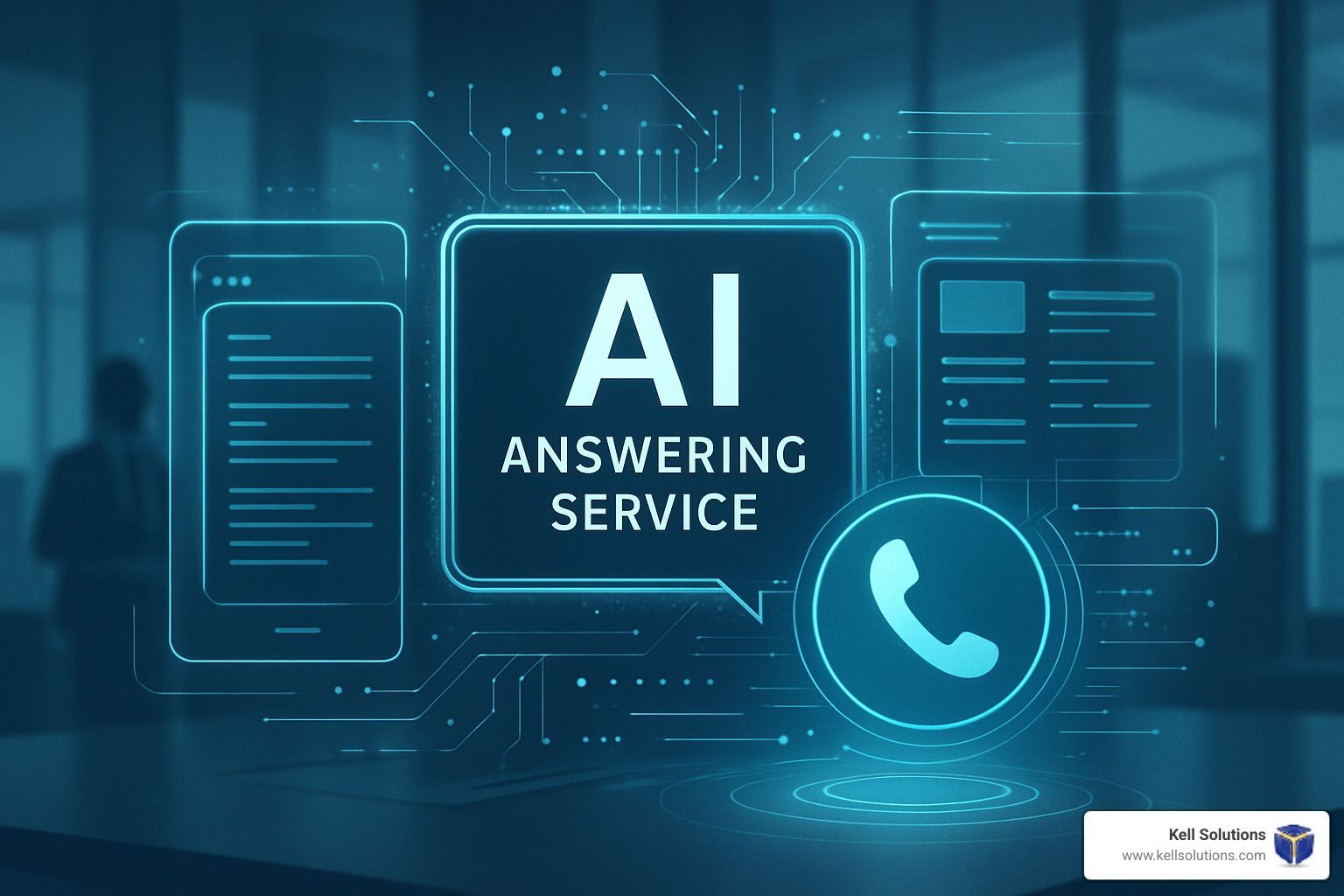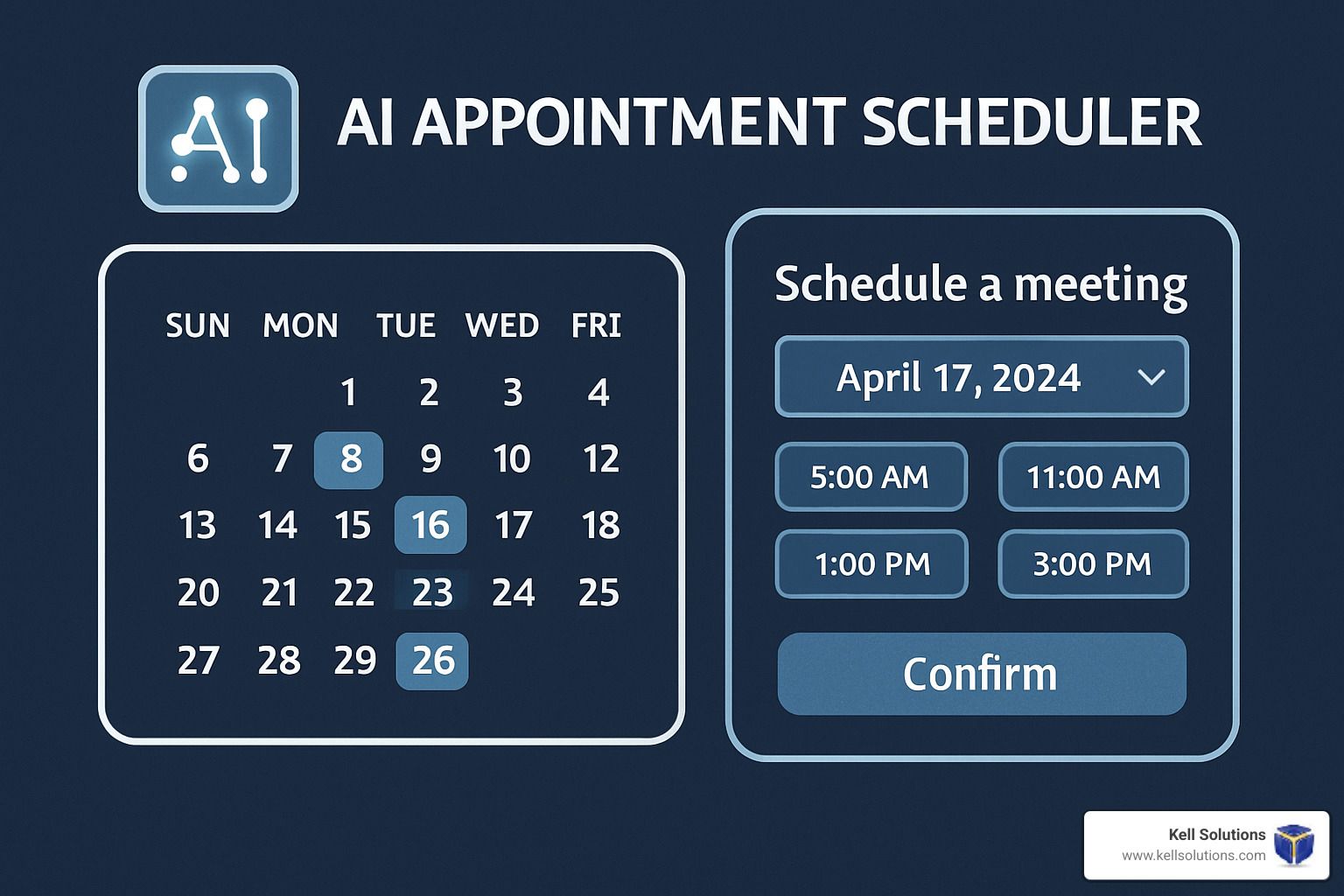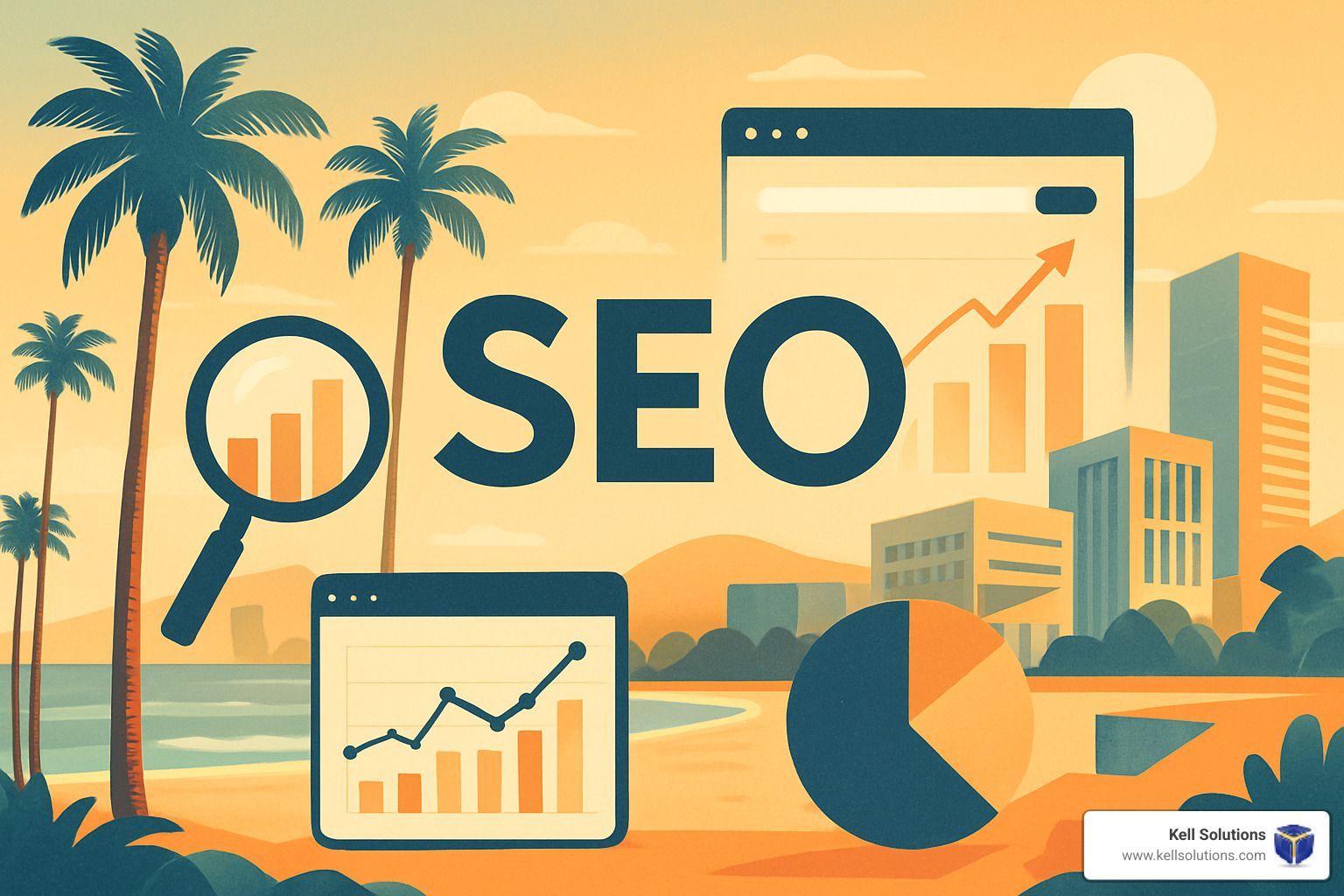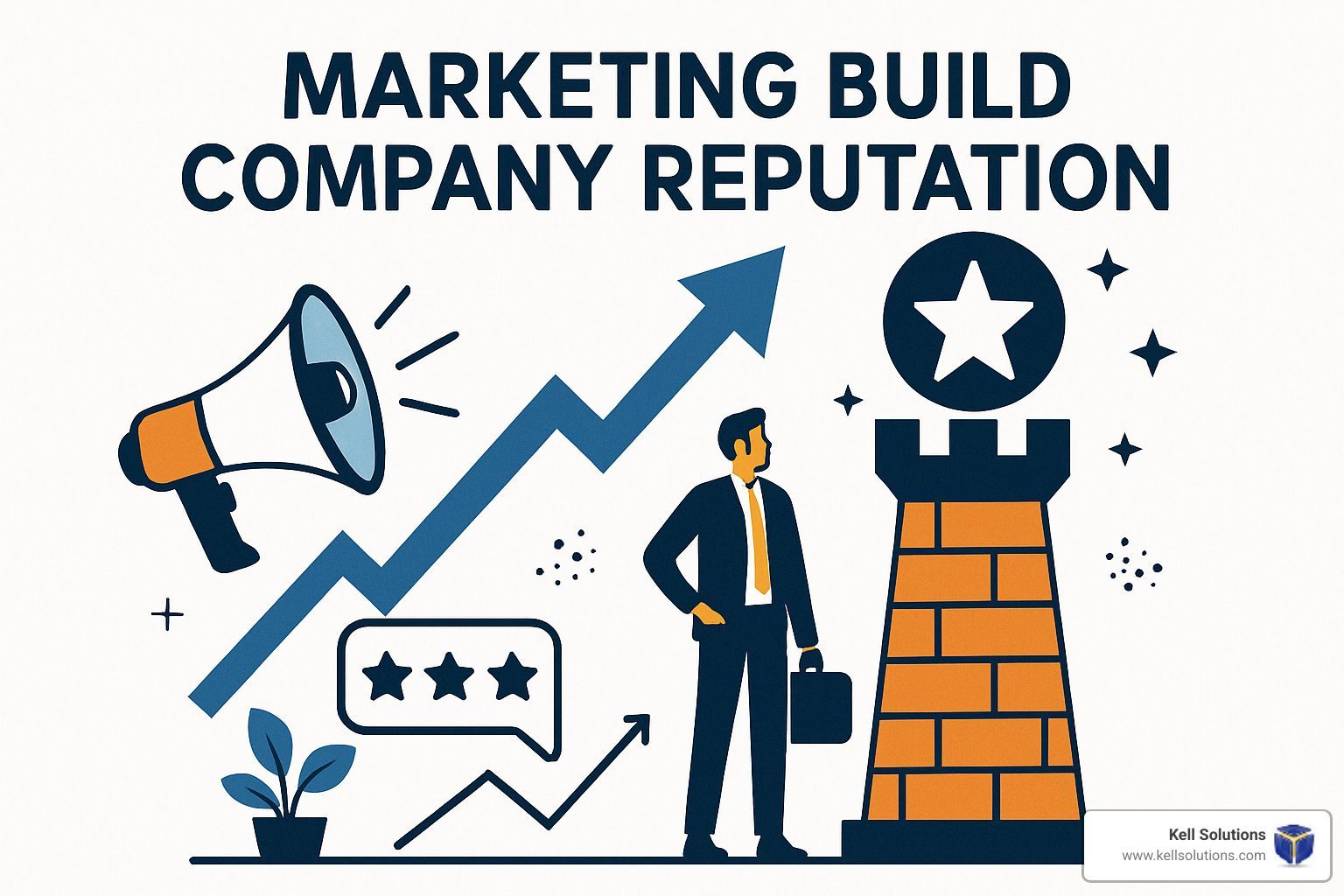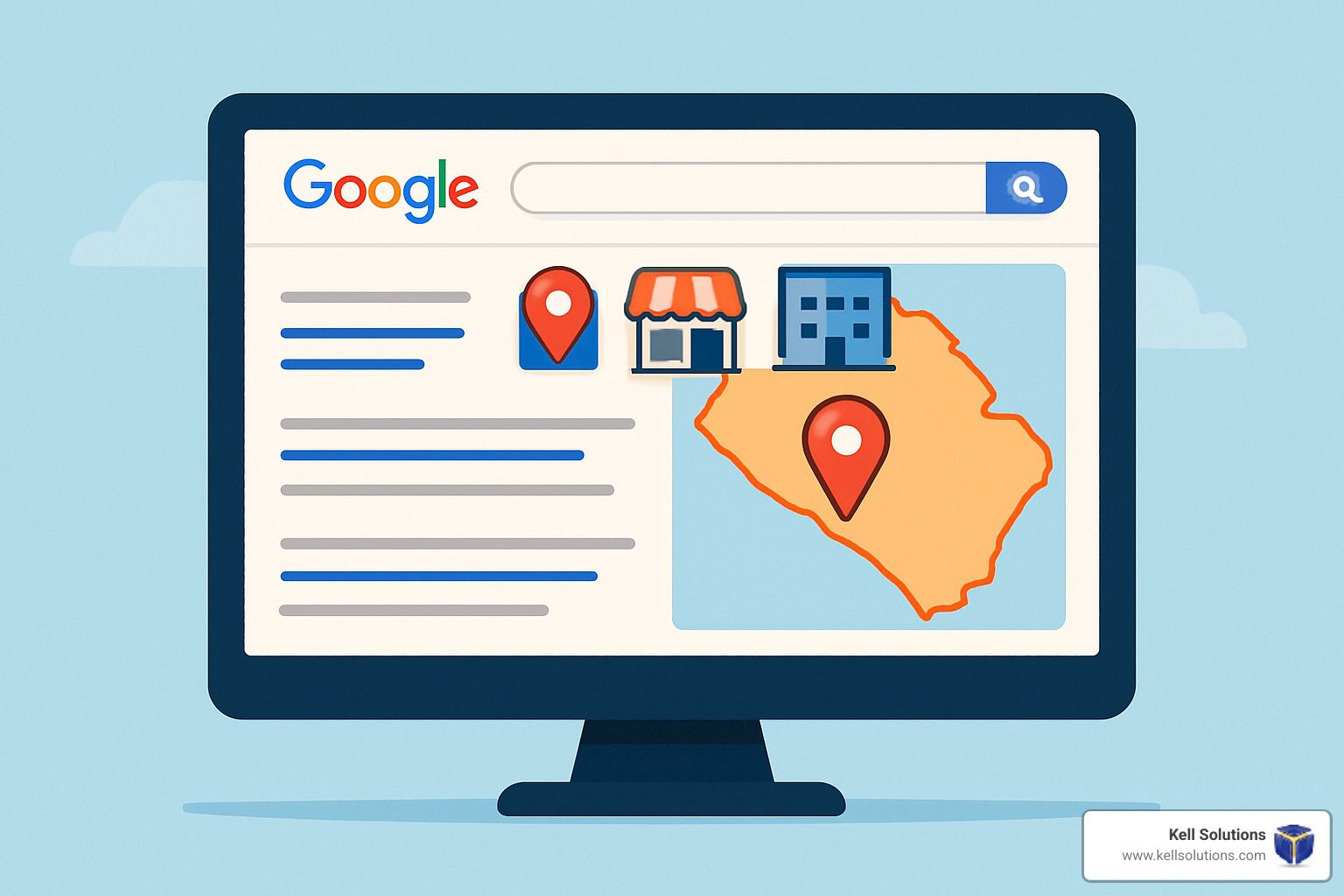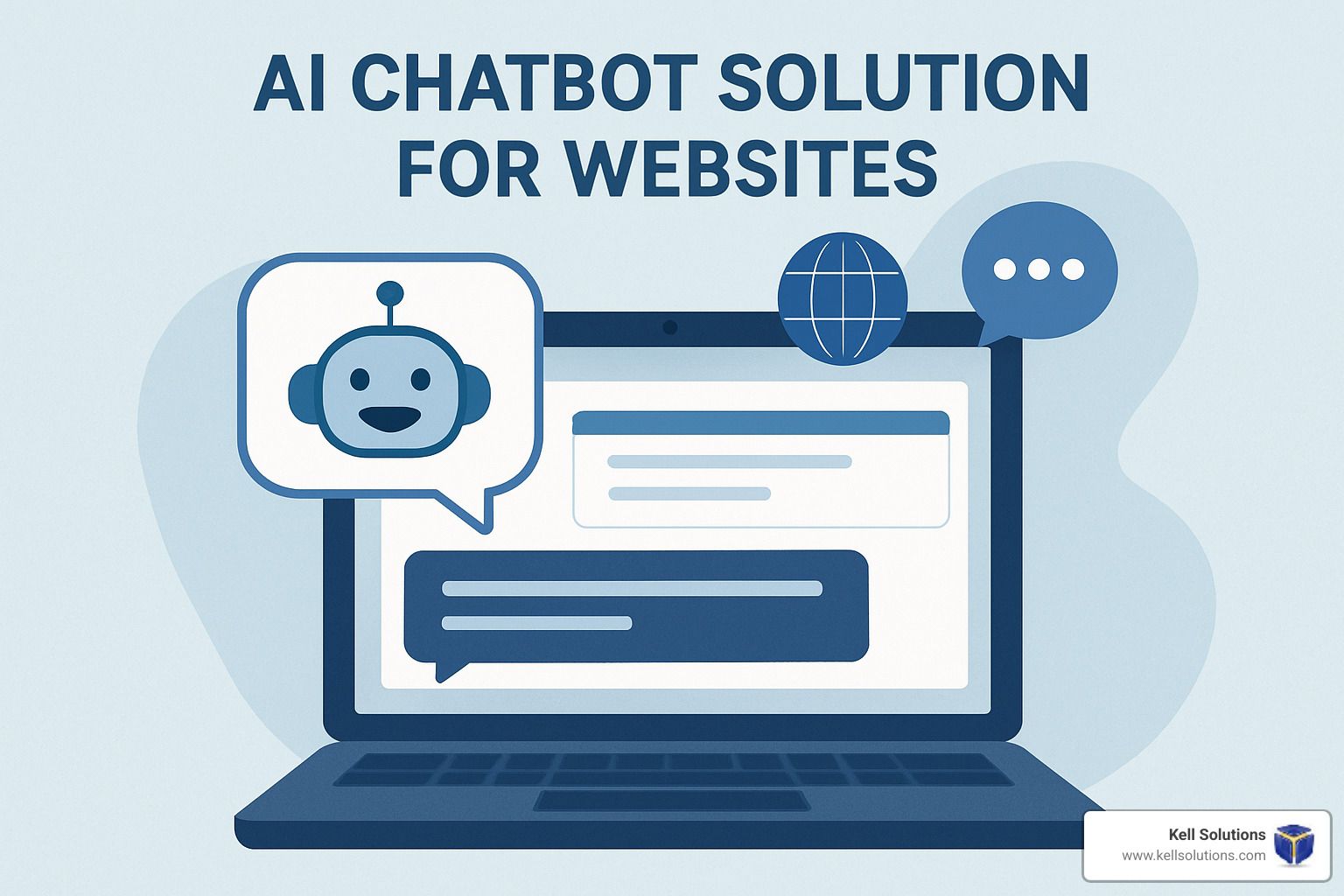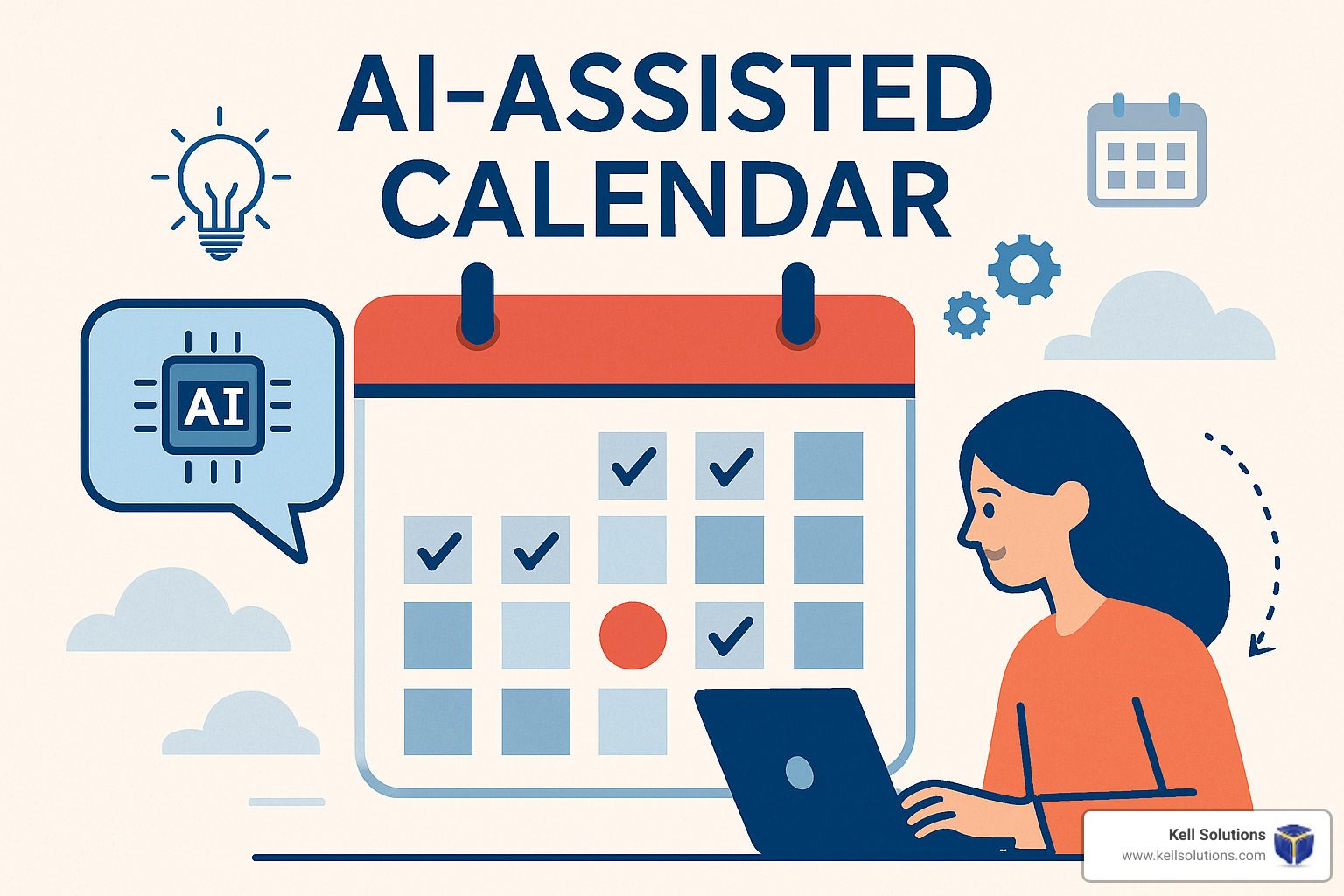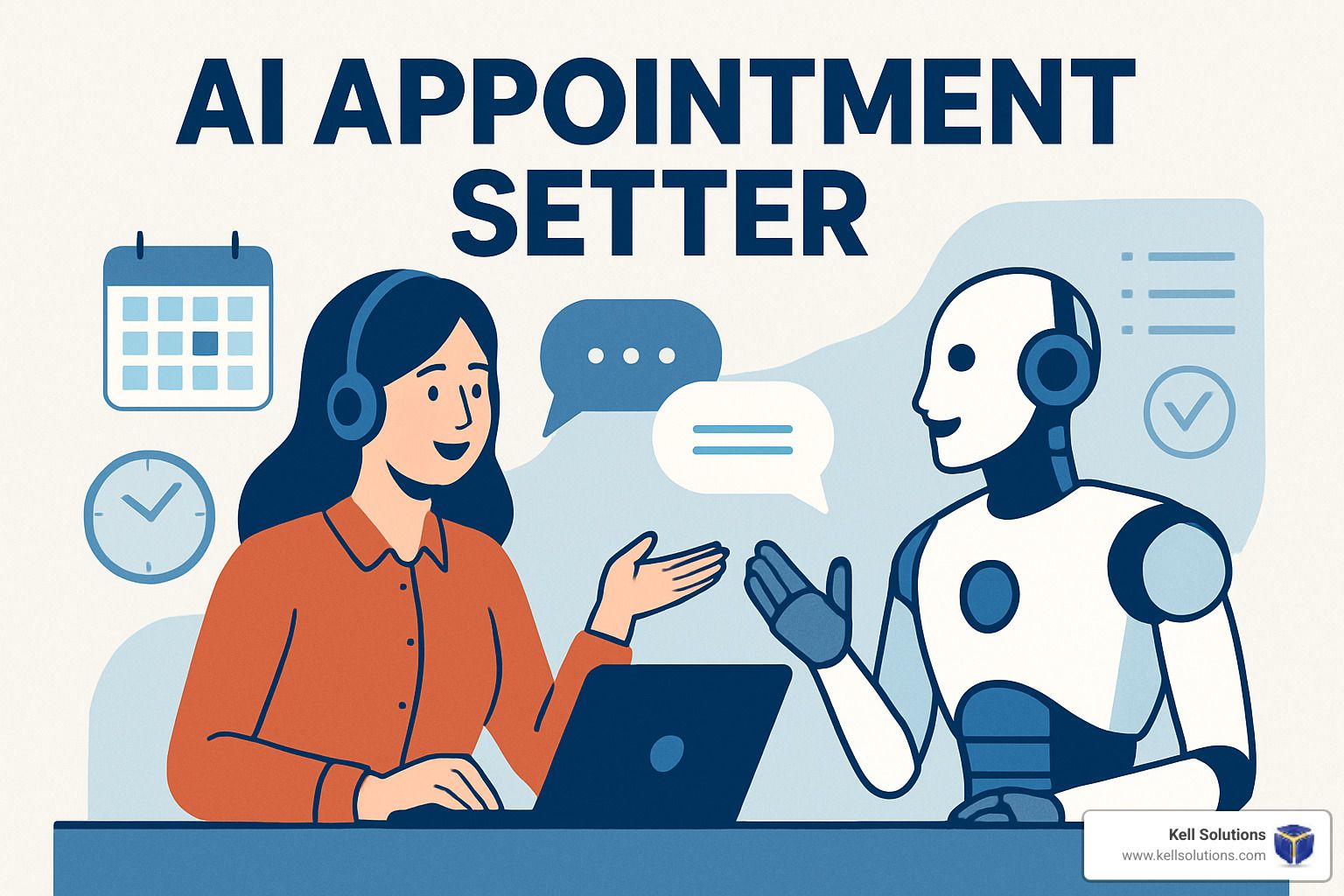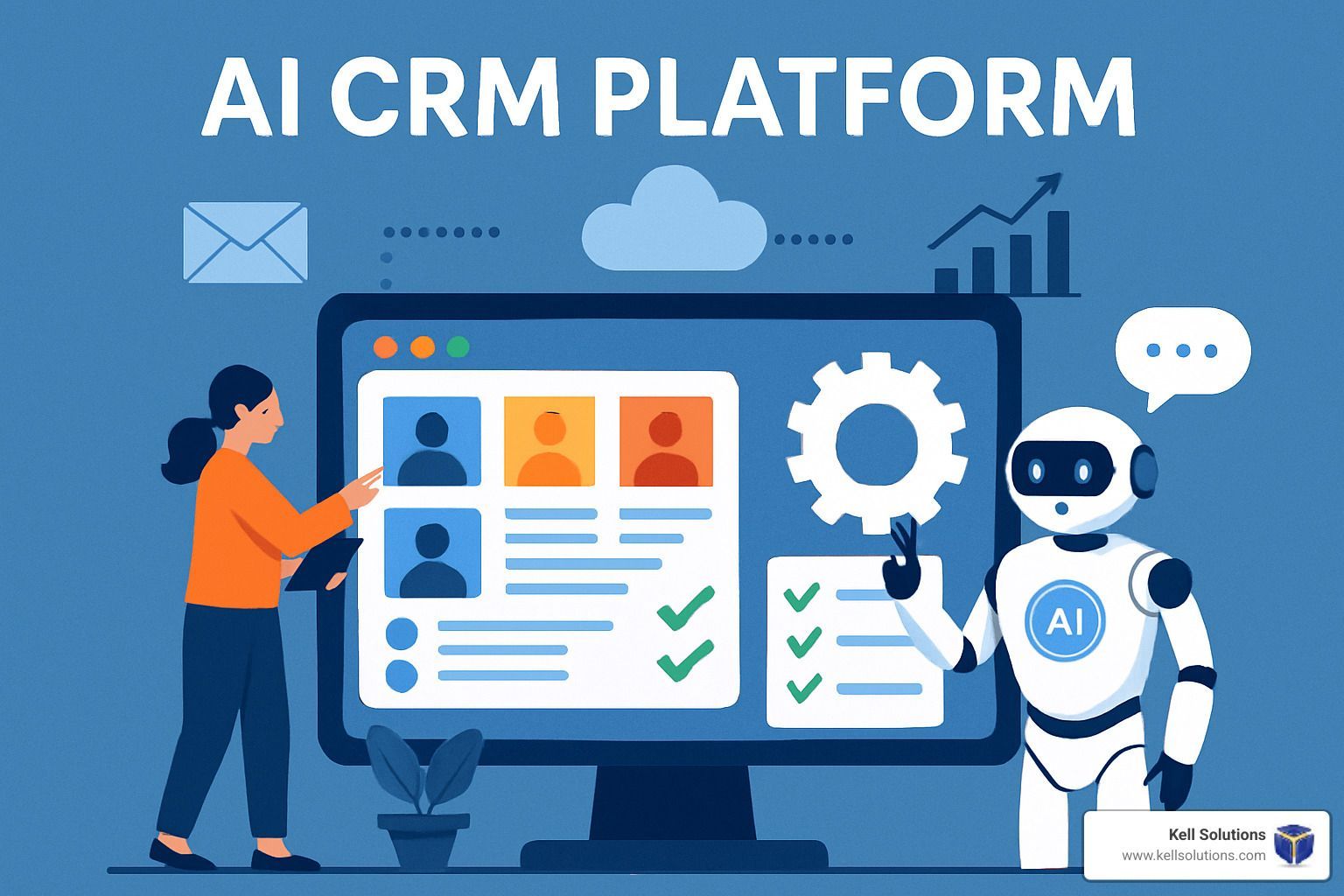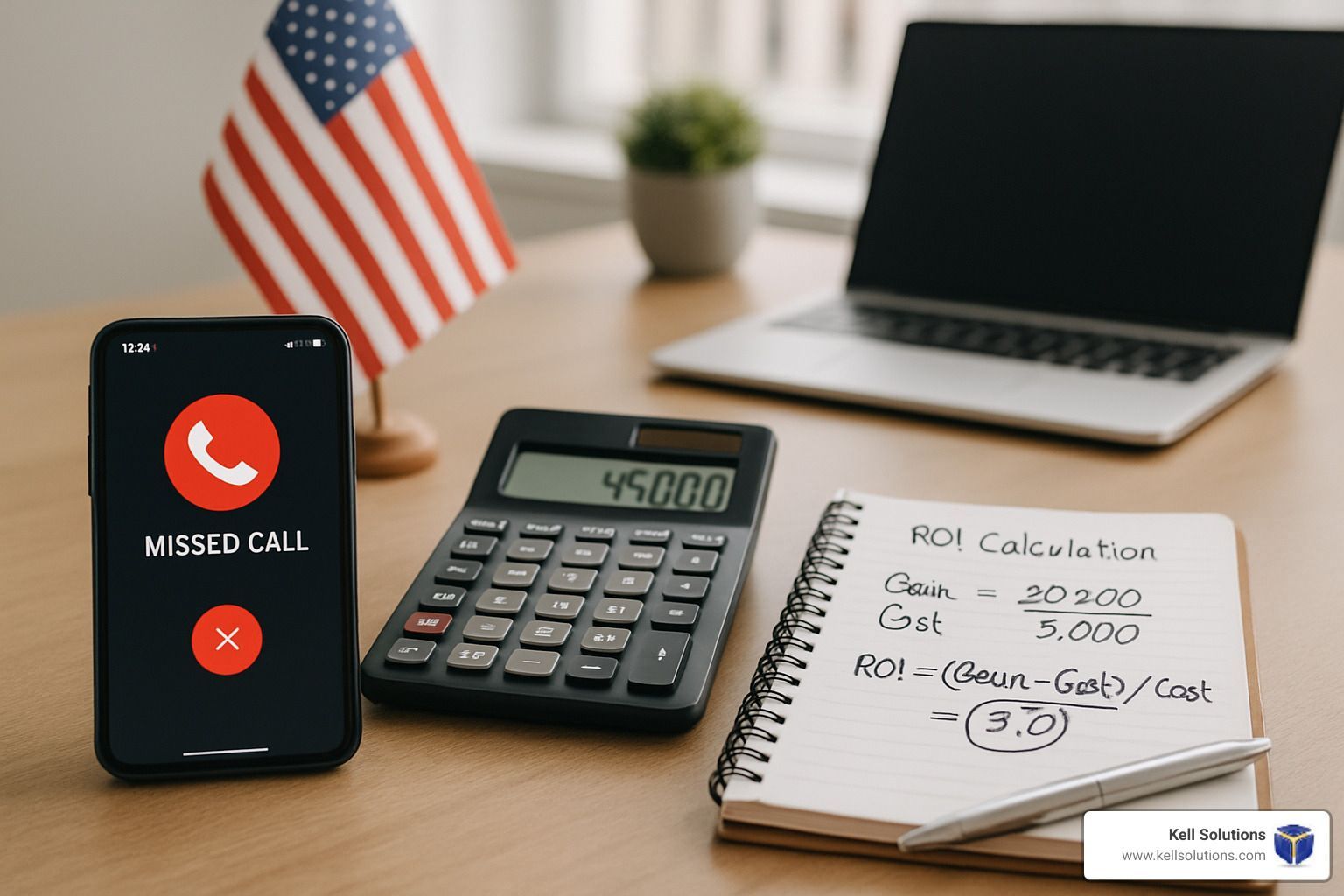Orange County Fractional CMO & Traditional Agency: Contractor Revenue Growth Comparison
A Data-Driven Analysis of How Orange County Contractors Accelerate Growth with Fractional CMOs Versus Traditional Marketing Agencies

Key Takeaways
- Fractional CMOs deliver 29% average revenue growth for Orange County contractors compared to 19% with traditional agencies—a 10% advantage that translates to $200,000 additional annual revenue for a $2M business.
- Companies using fractional CMO leadership achieve 60-70% cost savings ($114,000-$261,000 annually) compared to hiring a full-time CMO in Orange County's competitive market.
- Contractors with fractional CMO leadership typically see a 30% increase in qualified leads within 90 days and 25-35% higher marketing ROI within 12 months.
- Traditional agencies implement tactics without strategic responsibility, while fractional CMOs bring executive-level marketing expertise with accountability for business outcomes.
- In Orange County's sophisticated $327 billion economy, strategic marketing leadership is essential for contractors to thrive in a market characterized by high customer expectations and intense competition.
What Is a Fractional CMO and Why Orange County Contractors Need One
The difference between sustainable growth and stagnation often comes down to strategic marketing leadership. A fractional CMO provides executive-level marketing expertise on a part-time basis, delivering the strategic vision typically reserved for larger corporations but at a fraction of the cost. For Orange County contractors operating in one of the nation's most sophisticated markets, this approach bridges the gap between tactical execution and true business growth strategy that experienced fractional CMO services can provide through their executive-level expertise and strategic oversight.
Unlike traditional agencies that primarily focus on implementation, fractional CMOs take ownership of marketing outcomes and align them directly with business objectives. They operate as true executives, participating in leadership decisions while maintaining the flexibility of an external partner. This distinction is crucial in today's fragmented marketing landscape where technology, channels, and consumer behavior evolve rapidly.
The Executive-Level Marketing Leadership Difference
Traditional marketing agencies excel at what they're designed for: executing campaigns and managing specific marketing channels. However, they fundamentally lack the authority, incentive structure, and business integration needed to drive strategic direction. When Orange County contractors hire agencies, they're often still responsible for determining the overall marketing strategy themselves—a critical gap for business owners whose expertise lies elsewhere.
Fractional CMOs fill this leadership void by bringing senior executive experience to bear on your entire marketing ecosystem. They assess market positioning, competitive dynamics, customer journey mapping, and revenue operations to create coherent growth systems rather than disconnected tactics. The fractional model provides access to this executive capability without requiring the substantial investment of a full-time C-suite hire.
This leadership difference manifests in accountability structures. Traditional agencies measure success through activity metrics like impressions, clicks, and lead volume, while fractional CMOs focus on business outcomes such as revenue growth, customer acquisition costs, and lifetime customer value. This alignment with business objectives rather than marketing activities creates a fundamental shift in how marketing delivers value.
- Traditional agencies implement tactics under client direction
- Fractional CMOs develop strategies and take responsibility for outcomes
- Agencies report on marketing metrics (clicks, leads, etc.)
- Fractional CMOs measure business impact (revenue, profitability)
- Agencies operate in marketing silos; CMOs integrate across business functions
How Orange County's $327 Billion Economy Demands Strategic Marketing
Orange County's economic landscape presents unique challenges for contractors. With a $327 billion economy and some of the nation's highest property values, customer expectations exceed national averages in sophistication, quality demands, and digital engagement. The typical Orange County homeowner researches contractors more extensively, compares more options, and makes decisions based on different criteria than the average U.S. consumer.
This market sophistication requires correspondingly advanced marketing approaches. Generic marketing tactics that might work elsewhere often fall flat in Orange County's premium environment, where differentiation goes beyond basic service offerings and price points. Contractors must articulate compelling value propositions that resonate with discerning customers who can afford to be selective.
The competitive density compounds these challenges. Orange County's contractor market features everything from national brands to local specialists, creating a crowded landscape where standing out requires strategic positioning rather than merely increasing advertising spend. Without executive-level marketing leadership, contractors often find themselves in expensive bidding wars for attention rather than establishing sustainable competitive advantages.
The Real Cost of Marketing Leadership Gaps
The absence of strategic marketing leadership creates costs that extend far beyond missed opportunities. For Orange County contractors, these gaps typically manifest as increasing customer acquisition costs, inconsistent lead quality, and difficulty scaling beyond certain revenue plateaus. Many experience the frustration of spending more on marketing each year while seeing diminishing returns—a symptom of tactical execution without strategic direction.
When contractors rely solely on agencies without strategic oversight, marketing initiatives often lack cohesion across channels and touchpoints. The result is a fragmented customer experience where messaging, branding, and value propositions vary depending on where and how potential customers encounter the business. This inconsistency undermines trust precisely when sophisticated Orange County consumers are making critical evaluation decisions.
Perhaps most concerning is the opportunity cost of delayed strategic implementation. In competitive markets, early adopters of effective positioning and marketing systems gain disproportionate advantages that become increasingly expensive for competitors to overcome. Each month without cohesive marketing leadership represents market share and premium positioning opportunities that may never be recovered.
Direct Revenue Impact: The 10% Growth Advantage
The data tells a compelling story: companies implementing fractional CMO leadership report average revenue growth of 29% compared to 19% for those using traditional agencies without strategic marketing leadership. This 10-percentage-point improvement isn't merely a statistical curiosity—it represents substantial bottom-line impact that compounds over time. For Orange County contractors operating in a market characterized by sophisticated customers and intense competition, this growth differential often determines which businesses thrive and which merely survive.
Breaking Down the Numbers: $200,000 Additional Revenue on a $2M Business
For Orange County contractors generating $2 million annually, the difference between 19% and 29% growth represents an additional $200,000 in revenue—far exceeding the total investment in fractional CMO services. This revenue improvement comes from systemic enhancements rather than isolated campaign successes. Unlike temporary gains from specific promotions, strategically-driven growth creates compounding value as improved systems continue delivering results quarter after quarter.
The financial impact becomes even more significant when considering the typical profit margins in contracting businesses. With industry averages between 10-20% net profit, that additional $200,000 in revenue can translate to $20,000-$40,000 in bottom-line improvement. For many Orange County contractors, this represents the difference between a good year and an exceptional one, providing capital for expansion, equipment upgrades, or increased owner compensation.
Beyond first-year improvements, the strategic systems implemented by fractional CMOs continue generating returns long after the initial engagement. Unlike agency campaigns that require continuous spending to maintain results, properly designed marketing infrastructures appreciate in value as they accumulate data, refine targeting, and build brand equity. This creates a widening advantage over competitors still relying on tactical, campaign-based approaches.
Why Traditional Agencies Fall Short on Strategic Growth
Traditional agencies operate under fundamental constraints that limit their ability to drive strategic growth. Their business models typically center on campaign execution, channel management, and creative production—all valuable services, but fundamentally different from executive marketing leadership. Agencies excel at implementing defined strategies but rarely have the authority, incentive structure, or business integration necessary to develop truly transformative growth systems.
The siloed nature of traditional agency relationships creates additional limitations. An SEO agency focuses on search rankings, a paid media agency on advertising performance, and a creative agency on brand assets—but none has visibility across the entire customer acquisition ecosystem. Without this comprehensive view, opportunities for strategic leverage and cross-channel optimization remain invisible, regardless of the individual agency's competence within their specialization. Orange County's contractor market has become a battleground where marketing leadership, not just marketing tactics, determines success.
Perhaps most importantly, agencies aren't structured to align marketing with broader business objectives. Their performance metrics typically focus on marketing activities (impressions, clicks, leads) rather than business outcomes (revenue, profitability, customer lifetime value). This misalignment creates a disconnect where marketing might appear successful by agency metrics while failing to deliver meaningful business growth—a gap that fractional CMOs specifically address through their executive perspective.
Customer Acquisition Efficiency: Beyond Cost Per Lead
The performance differential between fractional CMO leadership and traditional agency approaches becomes apparent when analyzing actual business outcomes rather than activity metrics. Fractional CMOs deliver 25-35% higher marketing ROI within 12 months compared to contractors using marketing agencies without strategic oversight. This improvement stems from focusing on qualified lead generation and conversion optimization rather than raw lead volume.
Most Orange County contractors have experienced the frustration of increasing lead counts without corresponding revenue growth—a common result of tactically-focused marketing that prioritizes quantity over quality. Fractional CMOs shift this paradigm by implementing qualification systems that filter for high-probability, high-value opportunities, ensuring sales teams focus their efforts on prospects most likely to convert into profitable customers.
The 30% Qualified Lead Increase in 90 Days
Contractors implementing fractional CMO leadership typically see a 30% increase in qualified leads within the first 90 days of engagement. This rapid improvement doesn't come from dramatically increasing marketing budgets but from strategically reallocating existing resources toward higher-performing channels and messages. The fractional CMO's ability to quickly assess current performance, identify strategic gaps, and implement targeted improvements creates immediate momentum that agencies often struggle to match.
This qualified lead increase directly impacts sales efficiency and conversion rates. When sales teams receive leads that better match ideal customer profiles, close rates naturally improve, sales cycles shorten, and average project values tend to increase. For Orange County contractors where sales capacity is often limited by owner or key team member availability, this improvement in lead quality creates revenue growth without requiring proportional growth in sales resources.
The compounding effect becomes particularly powerful as these higher-quality customers typically generate stronger referrals, have higher retention rates, and purchase additional services more frequently. Unlike the diminishing returns often experienced with agency-led campaigns that exhaust available audiences, strategic lead generation systems built by fractional CMOs tend to appreciate in value over time.
Optimizing for High-Value Projects in Premium OC Markets
For Orange County contractors where average project values often exceed $10,000-$50,000, achieving the 30% increase in qualified leads that fractional CMOs typically deliver can generate substantial revenue increases while improving overall acquisition efficiency. Strategic positioning in premium market segments allows contractors to target higher-value projects that better justify their expertise and quality standards.
The sophisticated Orange County market requires nuanced messaging that resonates with discerning homeowners and business decision-makers. Fractional CMOs develop segmentation strategies that align contractor capabilities with specific customer needs, creating natural affinities that traditional mass-market approaches miss. This precision targeting reduces wasted marketing spend on prospects unlikely to value premium quality or service levels.
Beyond targeting, fractional CMOs implement value articulation frameworks that help contractors communicate their differentiation in meaningful terms. Rather than competing on price—a losing proposition in Orange County's premium market—they position services based on outcomes, quality assurances, and specialized expertise that justify premium pricing. This shift from price-based to value-based positioning directly impacts average project values and profit margins.
Case Study: 47% Lead Increase Without Additional Spending
One Orange County roofing contractor experienced the transformative impact of fractional CMO leadership after years of declining returns from their traditional agency relationship. Facing increasing competition and rising customer acquisition costs, they implemented fractional CMO guidance to reallocate their existing $18,000 monthly marketing budget. Within 90 days, qualified leads increased by 47% while total marketing spend remained unchanged—delivering immediate ROI and creating capacity for sustainable growth without additional investment.
Cost Comparison: The Financial Case for Fractional Leadership
The financial advantage of fractional CMO services becomes clear when comparing total investment to full-time executive costs. Companies using fractional CMOs typically achieve 60-70% cost savings compared to full-time executive hires. For Orange County contractors, this translates to accessing executive-level marketing leadership without the substantial overhead of a traditional C-suite position.
This cost efficiency doesn't come from compromising on quality but from optimizing utilization. Most contracting businesses don't require full-time, in-house CMO capabilities—they need strategic leadership concentrated at key decision points, system development, and performance review intervals. The fractional model delivers precisely this optimized access to executive expertise, allowing contractors to invest in implementation resources rather than underutilized executive capacity. For more on how this impacts the industry, read about Orange County's contractor market.
Full-Time CMO: $330,000-$357,000 Annually
The financial reality of hiring a full-time Chief Marketing Officer in Orange County is sobering for most contractors. Current market data reveals that CMOs in Orange County command an average base salary of $215,000, with additional compensation including benefits, bonuses, and equity bringing the total package to $330,000-$357,000 annually. This substantial investment puts dedicated executive marketing leadership beyond reach for many contracting businesses, creating a strategic disadvantage in a competitive market.
Beyond salary considerations, full-time CMO positions require significant onboarding time, typically 4-6 months before the executive fully understands the business and begins implementing effective strategies. This delay represents both direct costs and opportunity costs during the transition period. The search and hiring process itself often extends 3-5 months and may require expensive recruiting services, further increasing the total investment required.
For contractors experiencing seasonal revenue fluctuations common in Orange County's market, maintaining this fixed overhead during slower periods creates additional financial pressure. The inflexible nature of full-time executive costs can limit operational agility precisely when adaptability matters most. For more insights, explore the shift in how contractors approach these challenges.
Fractional CMO: $96,000-$216,000 Annually
By contrast, fractional CMO services typically range from $8,000-$18,000 monthly based on engagement scope and required time commitment, resulting in annual investments of $96,000-$216,000. This represents a 60-70% cost reduction compared to full-time executive hiring while delivering comparable or superior strategic capability. The flexibility of fractional arrangements allows contractors to scale services up or down based on business needs and growth phases, creating cost efficiency that full-time positions cannot match.
Multiple engagement models provide additional financial flexibility. Some contractors opt for intensive initial strategy development followed by lighter ongoing guidance, while others maintain consistent engagement levels throughout the year. Performance-based compensation structures further align costs with actual business outcomes, reducing financial risk compared to fixed salary arrangements.
Implementation begins immediately with fractional CMOs, eliminating the lengthy ramp-up period associated with full-time hires. Most fractional leaders have worked extensively with contracting businesses, allowing them to apply proven frameworks from day one rather than learning the industry from scratch. This experience advantage translates directly to faster implementation and earlier results.
The $114,000-$261,000 Annual Savings Opportunity
The direct cost comparison reveals potential annual savings of $114,000-$261,000 for Orange County contractors choosing fractional leadership over full-time CMO hiring. These savings represent capital that can be redirected toward implementation resources, growth initiatives, or improved profitability. For many contractors, this financial efficiency makes the difference between accessing executive marketing leadership or continuing without strategic guidance.
Beyond direct cost savings, fractional arrangements eliminate substantial hidden expenses associated with executive employment. These include office space, technology, administrative support, and ongoing professional development investments required for full-time executives. Additionally, fractional CMOs don't require costly severance packages or create legal exposure related to employment regulations, further reducing total investment risk.
Perhaps most significantly, fractional arrangements eliminate the opportunity cost of delayed implementation. While full-time hiring processes typically extend 3-5 months followed by 4-6 months of onboarding, fractional CMOs begin delivering value within days or weeks. For Orange County contractors in competitive market positions, this implementation speed can represent the difference between capturing emerging opportunities or watching competitors secure them first.
Performance-Based Pricing Models
Many fractional CMO arrangements include performance-based compensation components that further align costs with actual business outcomes. These structures typically feature a base retainer plus performance bonuses tied to specific revenue growth, lead generation, or profitability metrics. This approach creates natural accountability while reducing fixed costs, a combination particularly valuable for contractors with seasonal revenue patterns common in Orange County.
Several engagement models provide additional flexibility beyond traditional retainer arrangements:
- Project-Based Engagements: Fixed-scope strategic initiatives with defined deliverables and timelines, typically ranging from $15,000-$50,000 depending on complexity
- Growth-Share Arrangements: Reduced base fees with percentage compensation tied directly to revenue increases, like Kell Web Solutions RevShare Performance CMO creating true partnership alignment
- Hourly Strategic Consulting: For specific projects or limited engagements, fractional CMOs charge $200-$500 hourly, allowing contractors to access senior-level expertise for targeted initiatives without ongoing commitments
Technology Stack Optimization That Agencies Miss
Most Orange County contractors have accumulated fragmented technology systems through years of agency recommendations and internal decisions. The result is often a disconnected collection of tools rather than an integrated marketing and sales ecosystem.
Fractional CMOs bring systematic approaches to technology evaluation and integration, focusing on business outcomes rather than specific platform features. This strategic perspective identifies both capability gaps and redundant investments that traditional agencies—often incentivized to recommend specific platforms—typically miss.
From Disconnected Tools to Integrated Systems
The typical contractor technology landscape includes separate systems for website management, email marketing, CRM, project management, customer communication, and financial operations—with limited data sharing between these critical functions.
Fractional CMOs implement integration strategies that create unified customer views and streamlined workflows, eliminating the data silos that undermine marketing effectiveness. Rather than adding new technologies, this approach often begins by connecting existing investments through strategic integration.
This systems perspective extends beyond marketing technology to encompass the entire customer journey. By mapping technology touchpoints from initial awareness through project completion and ongoing relationship management, fractional CMOs identify critical handoff points where prospects and information often get lost. Addressing these systemic gaps frequently delivers more significant results than implementing new campaign tactics within existing siloed systems.
The financial impact of technology optimization can be substantial. Many Orange County contractors discover they're paying for redundant functionalities across multiple platforms while still experiencing critical capability gaps. Fractional CMOs typically identify 15-25% cost reduction opportunities while simultaneously improving system performance through strategic consolidation and integration prioritization.
Why Agencies Recommend More Tech While Fractional CMOs Optimize Existing Investments
Traditional agencies face structural incentives that influence their technology recommendations. Many maintain partnerships with specific platforms that provide commissions or implementation fees, creating potential conflicts of interest when evaluating technology needs. Without responsibility for overall business outcomes, agencies naturally focus on tools that enhance their specific service area rather than considering the entire marketing and sales ecosystem.
Rather than recommending additional technology purchases, fractional CMOs typically begin by optimizing existing technology investments. One Orange County roofing contractor reallocated their existing marketing budget under fractional CMO guidance, redirecting $27,000 in underutilized marketing technology toward implementation resources. This reallocation delivered a 32% increase in qualified leads while reducing total technology spending by 18%—improvements impossible to achieve through the siloed perspective of individual marketing agencies.
The implementation approach also differs significantly. Agencies typically require contractors to adapt their processes to specific technology platforms, while fractional CMOs design technology systems around optimal business workflows. This business-first approach ensures technology serves strategic objectives rather than creating procedural complications that undermine adoption and effectiveness.
The Competitive Advantage Timeline: Act Before Your Competition Does
For Orange County contractors, rapid implementation capability becomes particularly valuable during market disruptions. When AI search technologies reduced click-through rates by 34.5% for traditional search results, contractors with fractional CMO leadership implemented adaptive strategies within weeks while those relying on traditional agencies often waited months for tactical responses. This agility gap continues widening as market changes accelerate, creating increasing competitive advantages for businesses with strategic marketing leadership.
The first-mover advantage in implementing strategic marketing systems grows exponentially over time. As these systems accumulate performance data, optimize targeting parameters, and build brand equity, they create barriers that become increasingly expensive for competitors to overcome. Contractors who implement fractional CMO leadership today typically establish 12-18 month competitive advantages before market saturation requires new strategic differentiation—a timeline that rewards early adoption while punishing delay.
Frequently Asked Questions
Orange County contractors considering the transition from traditional agency relationships to fractional CMO leadership naturally have questions about implementation, expectations, and outcomes. These frequently asked questions address the most common concerns while providing practical guidance for evaluation.
Understanding both the strategic differences and practical implementation considerations helps contractors make informed decisions based on their specific business circumstances rather than generic industry practices. The following questions reflect real concerns expressed by Orange County contractors who have successfully implemented fractional CMO leadership.
Each question addresses a specific aspect of the transition process, implementation timeline, or expected outcomes to provide comprehensive guidance for contractors evaluating their marketing leadership options.
- Timeline considerations for implementation and results
- Business size requirements and growth thresholds
- Integration with existing marketing resources
- Orange County market-specific factors
- Measurement frameworks for performance evaluation
How quickly can a Fractional CMO impact my contractor business revenue?
"Most contractors see measurable impact within 60-90 days, with strategic foundations established in the first 30 days, implementation in days 31-60, and initial performance data by day 90. Revenue impact typically follows in months 3-6 as pipeline opportunities convert to sales."
The implementation timeline follows a predictable pattern that balances immediate optimizations with long-term strategic development. In the first 30 days, the fractional CMO conducts comprehensive assessment and strategic planning, including competitive analysis, customer journey mapping, and current performance evaluation. This phase establishes the strategic foundation for all subsequent activities while identifying immediate optimization opportunities.
Days 31-60 focus on implementation prioritization, beginning with adjustments that deliver the fastest impact while building more substantial strategic initiatives. These early optimizations frequently include conversion rate improvements, lead qualification refinements, and messaging clarifications that enhance performance without requiring extensive new resource development.
By days 60-90, initial performance data becomes available for analysis and refinement, with lead quality and volume improvements typically visible before revenue increases. Revenue impact generally appears in months 3-6 as the enhanced marketing pipeline converts to sales outcomes—though the specific timeline varies based on typical sales cycle length in your contractor specialty.
What's the minimum business size that benefits from a Fractional CMO?
Orange County contractors typically benefit from fractional CMO leadership when generating at least $1 million in annual revenue, though some specialized contractors with high average project values see positive ROI at $750,000 annual revenue. The key factor isn't absolute revenue but rather growth objectives and competitive market position. Contractors seeking significant growth, facing increasing competition, or experiencing declining marketing performance benefit regardless of specific revenue thresholds. The fractional model scales investment proportionally to business size, ensuring appropriate resource allocation without overcommitment.
Can I keep my current marketing agency if I hire a Fractional CMO?
Most contractors maintain existing agency relationships during the transition to fractional CMO leadership, though the relationship dynamics typically evolve. The fractional CMO provides strategic direction and performance accountability while agencies shift toward implementation roles focused on their specific expertise areas. This restructuring often improves agency performance by providing clearer strategic guidance and more focused objectives aligned with business outcomes rather than activity metrics.
Many Orange County contractors discover that agencies perform more effectively under fractional CMO direction, as strategic clarity eliminates confusion and performance expectations become more precisely defined. The fractional CMO serves as the contractor's advocate in agency relationships, ensuring alignment with business objectives and maintaining accountability for results rather than activities.
What makes Orange County's market different for contractor marketing?
Orange County represents one of the nation's most sophisticated contractor markets, characterized by affluent, discerning customers with exceptionally high expectations for quality, communication, and service delivery. The median home value exceeding $1 million in many communities creates different purchasing dynamics compared to national averages, with decision processes more heavily influenced by reputation, social proof, and perceived quality than by price competition. This premium market environment requires correspondingly sophisticated marketing approaches that articulate value propositions aligned with Orange County's unique customer expectations.
"Orange County's $327 billion economy and premium real estate market create customer expectations that exceed national averages for quality, communication, and service standards. Success requires marketing sophistication that matches the market's affluence and discernment."
The competitive density further distinguishes Orange County's contractor landscape. With over 12,000 licensed contractors operating in the county, differentiation requires strategic positioning beyond generic quality claims or price advantages. Successful contractors develop clear specialization, targeted customer profiles, and compelling value articulation that resonates with specific market segments rather than attempting to serve the entire market.
Digital sophistication among Orange County consumers also exceeds national averages, with higher research intensity, cross-platform comparison shopping, and review sensitivity than typical markets. Contractors require integrated digital presence across multiple platforms with consistent messaging and responsive engagement capabilities—tactical requirements that benefit significantly from strategic oversight.
How do I measure the ROI of a Fractional CMO versus my current agency?
Measuring fractional CMO performance requires shifting from activity metrics (impressions, clicks, leads) to business outcome metrics that directly impact profitability and growth. The primary measurement framework should include revenue growth rate, customer acquisition cost (CAC), marketing-originated revenue percentage, lead-to-sale conversion rate, and average project value trends.
These business-centered metrics provide more meaningful evaluation than traditional marketing activities that may not translate to actual business performance.
Comprehensive ROI Framework: 1. Revenue Growth Rate (target: 25%+ annual) 2. Customer Acquisition Cost (target: 20-30% reduction in 12 months) 3. Marketing-Originated Revenue (target: 60%+ of new business) 4. Lead-to-Sale Conversion Rate (target: 30%+ improvement) 5. Average Project Value (target: 15%+ increase)
Most fractional CMO engagements establish formal quarterly business reviews that evaluate performance against these metrics while identifying strategic adjustments based on market changes and performance data. This structured approach ensures continuous improvement while maintaining accountability for business outcomes rather than marketing activities.
The comparison process should acknowledge timeline differences between tactical and strategic results. While traditional agencies often deliver immediate activity increases (more leads, more clicks), fractional CMOs build systems that deliver sustainable business advantages over time. The evaluation framework should reflect this difference by measuring cumulative improvement rather than isolated campaign performance.
For Orange County contractors seeking sustainable growth in an increasingly competitive market, fractional CMO leadership delivers the strategic advantages typically reserved for much larger companies. By combining executive marketing expertise with flexible engagement models, this approach bridges the gap between tactical execution and true business growth strategy.
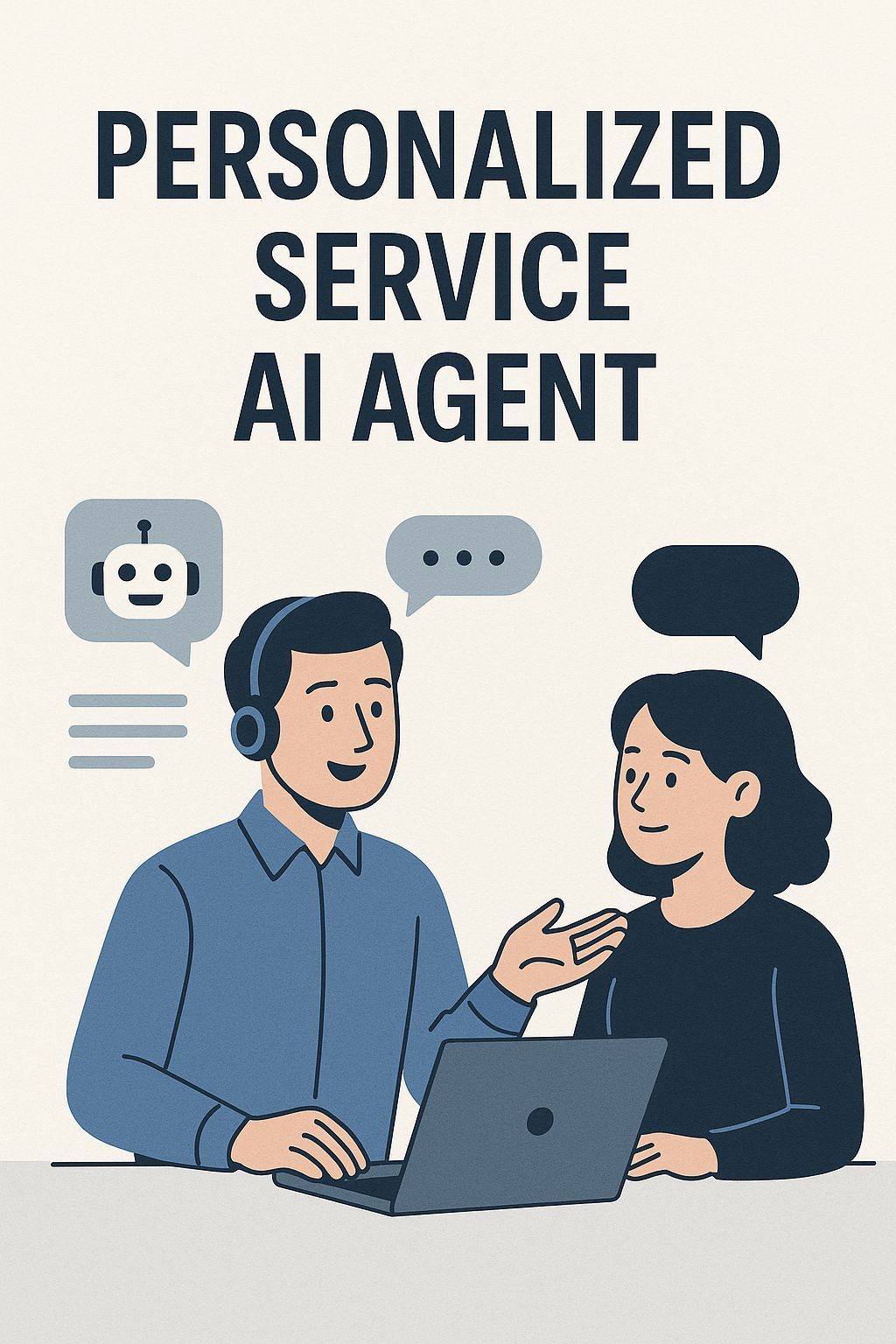

Orange County HVAC Google AI Overview Domination: 7 Proven Strategies to Capture Featured AI Results




